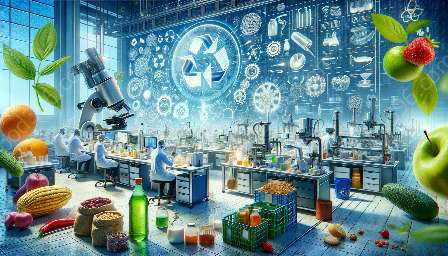Food preservation is a vital aspect of food science and technology, playing a crucial role in the field of food & drink. This comprehensive guide explores the various methods, techniques, and benefits of food preservation.
The Importance of Food Preservation
Food preservation has been an integral part of human history, enabling people to store food for extended periods and ensuring food security. It helps prevent spoilage, extends shelf life, and maintains the nutritional quality of food.
The Role of Food Science and Technology
In the realm of food science and technology, food preservation encompasses a wide range of disciplines, including microbiology, chemistry, engineering, and more. Understanding the principles of food preservation is essential for creating and maintaining safe, nutritious, and high-quality food products.
Methods and Techniques
There are numerous methods and techniques used for food preservation, each serving specific purposes and applications. From traditional methods like drying, salting, and fermentation to modern techniques such as canning, freezing, and irradiation, each method has its unique attributes and impacts on the food.
Drying
Drying is one of the oldest and simplest methods of food preservation, involving the removal of moisture from foods to inhibit the growth of microorganisms. It is used to preserve a wide variety of foods, including fruits, vegetables, and meats.
Salting
Salting, or curing, involves the addition of salt to food products to draw out moisture and create an inhospitable environment for bacteria. This method is commonly used for preserving meats and fish, giving rise to products like salted pork and salted fish.
Fermentation
Fermentation is a natural process that utilizes microorganisms, such as bacteria and yeast, to preserve and transform food. This method is employed in the production of fermented foods like yogurt, cheese, sauerkraut, and kimchi.
Canning
Canning involves the heat treatment of food in sealed containers to destroy microorganisms and enzymes, thereby extending the shelf life of the products. It is widely used for preserving fruits, vegetables, soups, and sauces.
Freezing
Freezing is a popular method of food preservation that involves lowering the temperature of food products to inhibit the growth of spoilage microorganisms. It is effective for preserving a wide range of foods, including meats, seafood, fruits, and vegetables.
Irradiation
Irradiation is a modern method of food preservation that utilizes ionizing radiation to kill bacteria, insects, and fungi in food products. It can extend the shelf life of foods and reduce the risk of foodborne illnesses.
Benefits of Food Preservation
Food preservation offers numerous benefits, ranging from increased food availability and reduced food waste to improved food safety and convenience. By preserving seasonal produce and food surplus, it contributes to sustainable food practices and helps meet the global demand for food.
Conclusion
Food preservation is an essential aspect of food science and technology, with significant implications for the world of food & drink. By understanding the various methods, techniques, and benefits of food preservation, we can appreciate its role in ensuring food security, nutrition, and sustainability.

